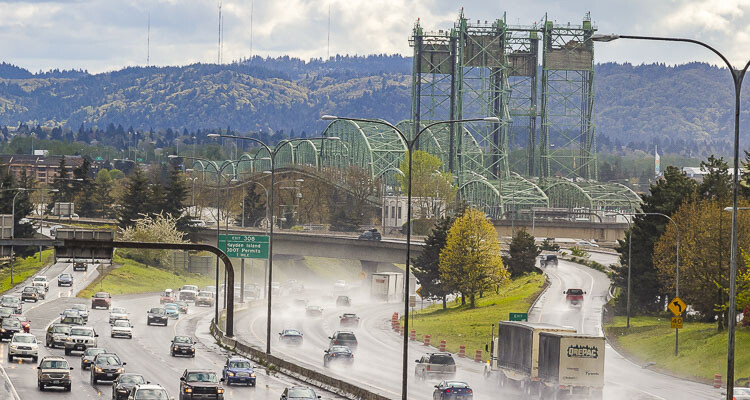
The Oregon Legislature should reject this allocation, and shut down planning altogether on the Interstate Bridge Replacement Project
John A. Charles Jr.
Cascade Policy Institute
Over the next four weeks, the Oregon legislature will decide whether to make a down payment of $1 billion to replace the I-5 Interstate Bridge connecting Portland with Vancouver. The total cost of the bridge is unknown, but is estimated to be around $6 billion.
The legislature should reject this allocation, and shut down planning altogether on the Interstate Bridge Replacement Project (IBRP).
The number one concern for the public when it comes to highway planning is traffic congestion, and there is no way a single replacement bridge on I-5 could ever reduce congestion. The entire I-5 corridor from Wilsonville to Vancouver is over-subscribed for about 12 hours per day, and this will only get worse as the region grows.
The Interstate Bridge should be left alone for now, and ODOT should be directed to start planning for two new bridges – one upstream from the Glenn Jackson I-205 Bridge, and one downstream from the I-5 Interstate Bridge. The new crossings would eliminate most congestion on the existing bridges, while providing essential redundancy in the event of a catastrophic earthquake.
We especially need a new Columbia River bridge with a direct connection to Highway 26 near Hillsboro. Not only would this reduce the total amount of driving for thousands of Westside motorists – who now have to drive to Portland just to get to Vancouver – it would provide much-needed congestion relief at three current bottlenecks: the Sylvan hills tunnels on Highway 26, the Fremont Bridge, and I-5 in North Portland.
Planners and their political allies seem to be missing a central truth about river-based cities: they need lots of bridge crossings. In downtown Portland, we have two interstate highway bridges over the Willamette River, plus many local crossings including the Burnside, Steel, Morrison and Hawthorne bridges.
Each crossing serves a market and is necessary for the proper functioning of the city. If we applied ODOT’s logic for the IBRP, we’d tear down all the local Willamette River bridges and just keep the Marquam and Fremont Bridges.
Of course, we’re not going to do that because it would be insane. But it’s considered brilliant planning for the Columbia River.
Planning for a new Interstate Bridge began in 1997, and 25 years later we have nothing to show for it. Legislators should chart a new course by withholding the requested $1 billion, and ordering ODOT to start planning for new bridges and highways outside the I-5 corridor.
John A. Charles, Jr. is president and CEO of Cascade Policy Institute, a nonprofit policy research organization based in Portland. A version of this article was published by the Portland Tribune on May 17, 2023.
Also read:
- Delays expected on Northwest 99th Street during water quality project constructionClark County will begin construction in July to install a stormwater filter vault on NW 99th Street. Drivers can expect delays, but lanes will remain open during the work.
- POLL: What’s the biggest concern you have with the current I-5 Bridge replacement plan?As costs rise and Oregon’s funding fails, concerns mount over the current I-5 Bridge replacement plan. Clark County Today asks readers: what’s your biggest concern?
- Plan ahead for ramp closures on I-5 near Ridgefield, July 8-9Travelers on northbound I-5 near Ridgefield should prepare for ramp closures July 8–9 as WSDOT crews conduct final testing of new wrong-way driving detection systems. The closures affect exits 9 and 11, including the Gee Creek Rest Area.
- Oregon DOT director calls transportation funding bill failure ‘shocking,’ warns of layoffsODOT Director Kris Strickler warned staff that up to 700 layoffs are imminent after lawmakers failed to pass a transportation funding bill, deepening the agency’s $300 million shortfall.
- New crossing opens over SR 500 in VancouverWSDOT has opened a new pedestrian and bike bridge over SR 500 in Vancouver, restoring direct and ADA-accessible access for people walking, biking, or rolling.









